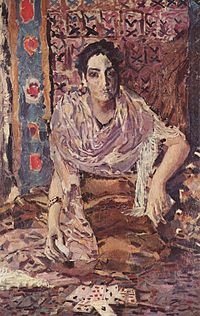| Card |
Significance
|
 |
An adult man with sandy, dark blond, or light brown hair, with brown, blue, or hazel eyes. Usually a family member or other loved one. Paternal and family-oriented.
|
 |
An adult man with red or light blond hair with blue, green, or gray eyes. Usually a wealthy man in an authority position.
|
 |
An adult man with medium or dark brown hair, with brown, blue, or hazel eyes. Usually a married businessman (although business could have a sexual, rather than commercial, interpretation.)
|
 |
An adult man with dark brown to black hair, and dark brown eyes. Usually a widower or divorced man, or a man from a foreign country. Ambitious and powerful, can be arrogant and deceptive.
|
 |
An adult woman with sandy, dark blond, or light brown hair, with brown, blue, or hazel eyes. Usually a family member or other loved one. Maternal and family-oriented.
|
 |
An adult woman with red or light blond hair with blue, green, or gray eyes. Usually a wealthy woman in an authority position.
|
 |
An adult woman with medium or dark brown hair, with brown, blue, or hazel eyes. Usually a businesswoman or social butterfly.
|
 |
An adult woman with dark brown to black hair, and dark brown eyes. Usually a widow or divorced woman, or a woman from a foreign country. Ambitious and intelligent, can be cold, calculating, or spiteful.
|









